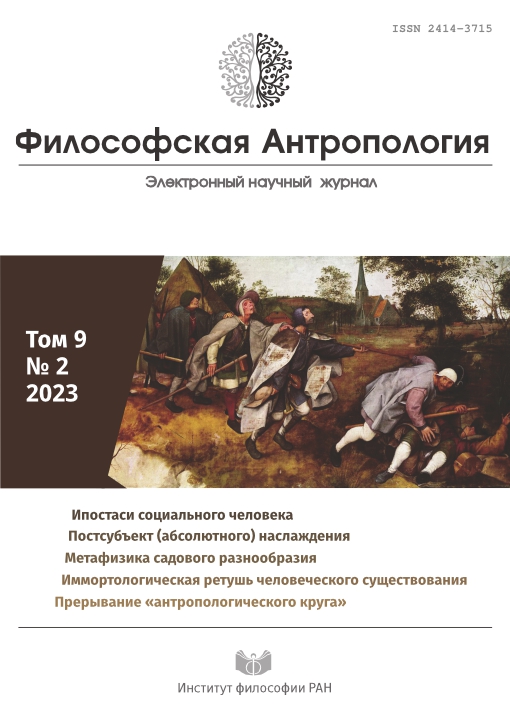The Anthropological Dimension of the Pygmalion Effect
DOI:
https://doi.org/10.21146/2414-3715-2023-9-2-146-152Keywords:
Pygmalion effect, Golem effect, modal personality, self-fulfilling prophecy, neuroplasticity, existential disappointment, uncompetitiveness of goodness, Soviet project, peak of humanism, V.A. KutyrevAbstract
The "Pygmalion effect" applies to humans. It is a phenomenon in which their own expectations of themselves or what other people expect from them can influence their behavior and performance. Moreover, this works even at the most basic, primitive physiological level — in an enriched environment, the brain becomes larger in volume, and the density of its nervous tissue increases, while provoking severe stress or depleted conditions reduce the number of nerve cells in the brain. People in the USSR had absolute confidence that in the end good would win (the Pygmalion effect or placebo in the language of medicine), while from the 1990s to the present day, inclusive, the opposite attitude (program) totally prevails in Russia — evil will still prevail (the Golem effect or nocebo in the language of medicine). The proof of the Pygmalion effect in Soviet times is modal personalities — those who realized all the best of their (Soviet) era. There are countless of such examples in Soviet times. One of the most prominent of them in the philosophical environment was Professor V.A. Kutyrev. Anyone could become an academician, philosopher, engineer, officer or cosmonaut, etc. It was the Pygmalion effect in action.

